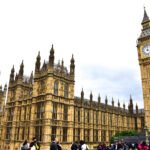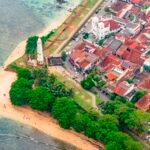Introduction to Harbin:
Harbin’s unique historical journey and geographical location have shaped it into a beautiful city with a distinctive foreign charm. Often called the “Moscow of the East,” Harbin is also one of the birthplaces of ice and snow culture worldwide. Its Ice Lantern Festival, Ice and Snow World, winter swimming in the Songhua River, and snow sculptures on Sun Island are renowned both in China and abroad. The picturesque Songhua River meanders through the city, cleansing and refreshing this century-old “Ice City.” As night falls, Harbin seems to tell its enchanting story of past and present like a poetic dream.
Personal Impressions:
Harbin is also known as the “Ice City,” and its annual Ice and Snow Festival, along with the Ice Sculpture and Lantern Festival, never fails to draw in visitors from around the world. The city has a strong Russian influence, closely tied to its history of being under Russian colonization. In Daoli District, landmarks like St. Sophia Cathedral, Central Avenue, the Huamei Western Restaurant, and the Lucia Western Restaurant, along with the many Russian-style buildings scattered throughout, make it no surprise that people often refer to Harbin as the “Little Paris of the East.”
Best Time to Visit:
The best time to visit Harbin is during the summer and winter seasons. In summer, the weather is cool and pleasant, with shady trees and a relaxing atmosphere, making it a perfect spot for a summer getaway. In winter, the city transforms into a snowy wonderland, stunningly beautiful despite the cold temperatures. Though chilly, the landscape of ice and snow is a stark contrast to the mild, watery regions of southern China. Combined with Harbin’s famous ice lanterns, snow sculptures, and a variety of winter sports and activities, visitors can fully experience the joy that ice and snow bring to life.
What to Wear:
Harbin experiences four distinct seasons. In summer, with an average temperature of 22°C (72°F), it’s best to wear short-sleeve T-shirts, shorts, and skirts. However, since mornings and evenings can be cooler, or in case of occasional rain, it’s a good idea to bring a light jacket or long sleeves just in case. Winter is cold, with average temperatures around -15°C (5°F), and nighttime lows can drop to -30°C (-22°F). In addition to wearing down jackets and thermal clothing, it’s essential to have warm accessories like hats, scarves, and gloves to stay cozy.
St. Sophia Cathedral
St. Sophia Cathedral stands grandly in the Architectural Art Square, an awe-inspiring and magnificent sight. The church’s walls are entirely made of red brick, crowned with a massive onion-shaped dome. Surrounding the central dome are four tented roofs of varying sizes, creating a harmonious hierarchical layout. The four floors are connected by stairways, and there are four entrances on all sides. Above the main entrance sits the bell tower, where seven bronze bells represent the seven musical notes. These bells, when struck by skilled bell ringers using both hands and feet, produce a melodious and rhythmic chime.
The towering and majestic St. Sophia Cathedral forms a unique part of Harbin’s exotic cultural landscape, symbolizing the city’s distinctive charm. At the same time, it serves as a historical testament to the Russian invasion of Northeast China and remains an important relic for studying Harbin’s modern history. Inside the cathedral is now Harbin’s Architectural Art Museum, showcasing valuable photographs that chronicle the city’s development.
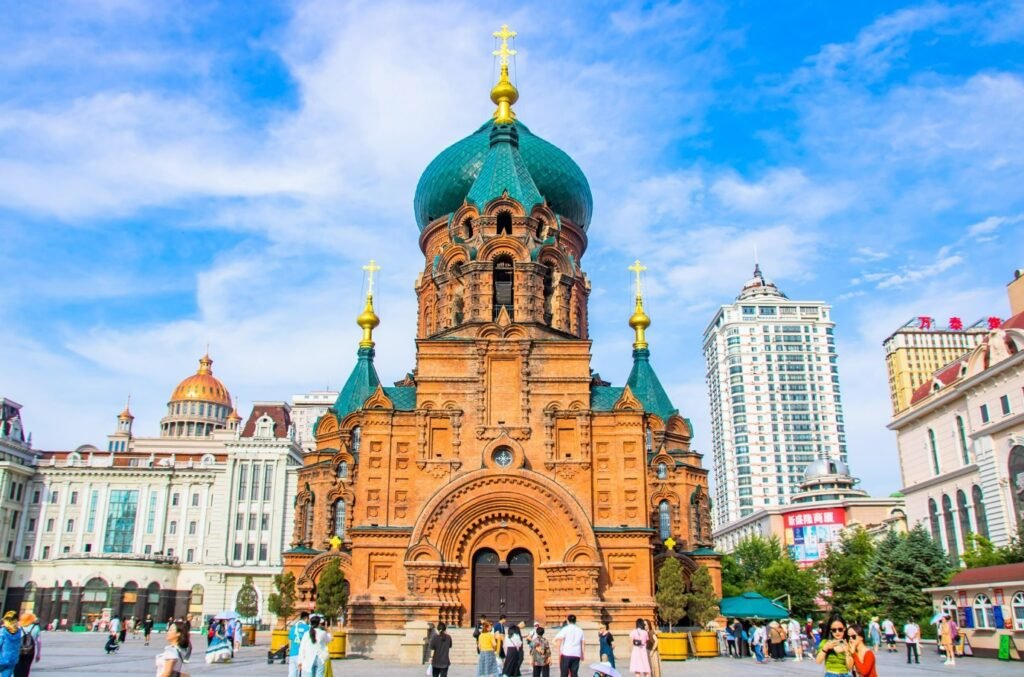
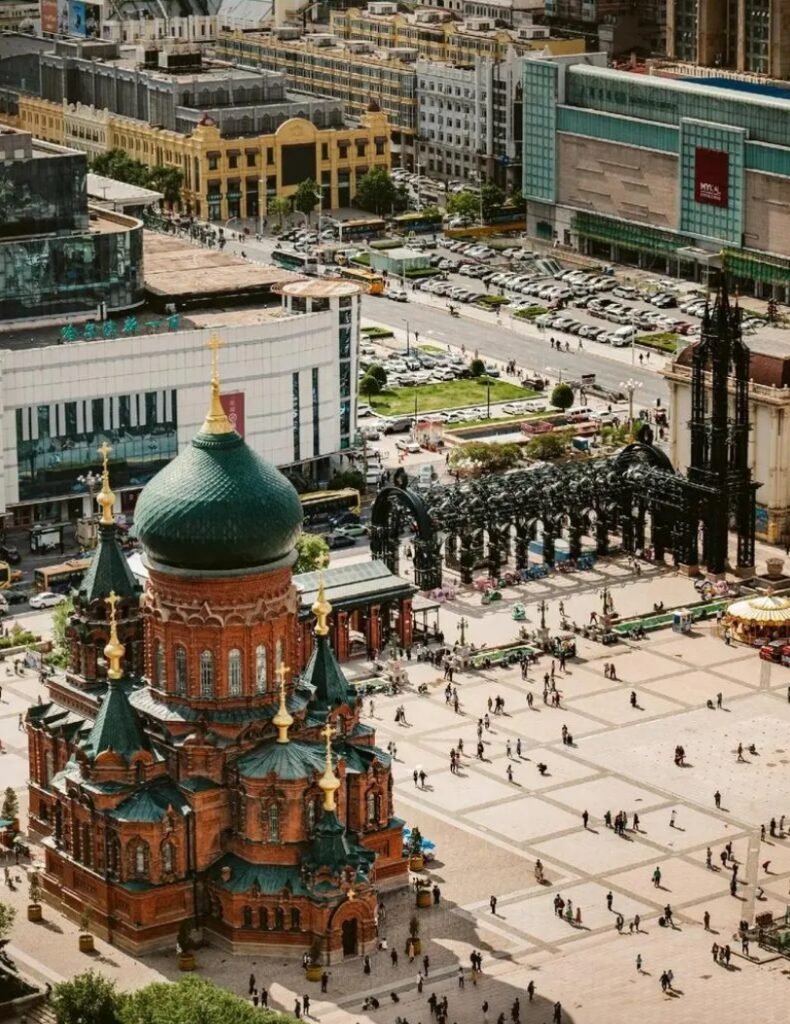
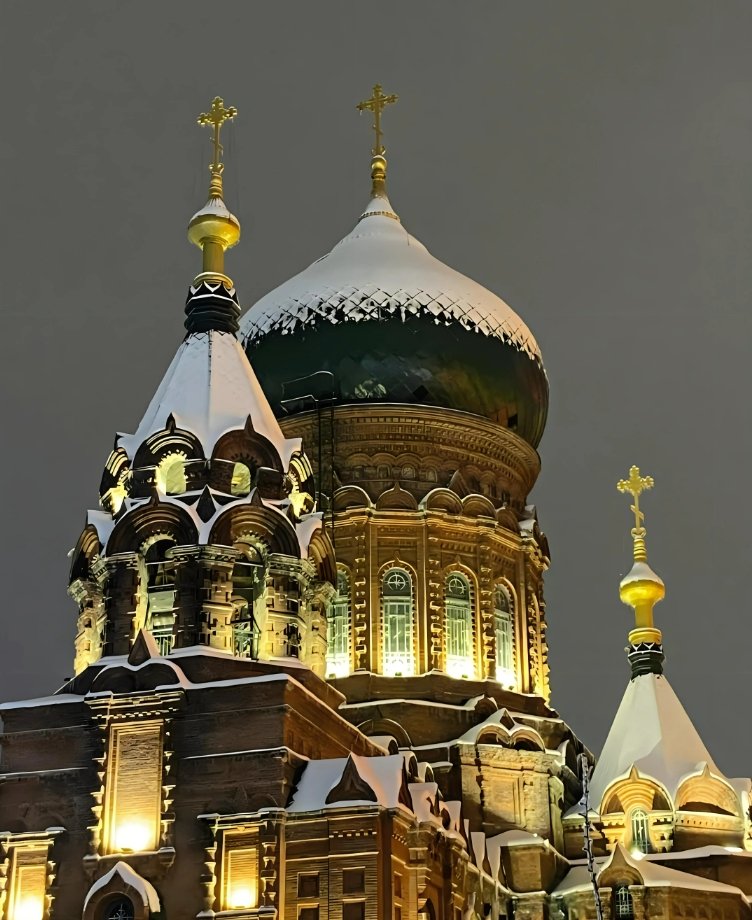
Central Avenue
Built in 1900, Central Avenue is Harbin’s most bustling pedestrian shopping street. It stretches 1,450 meters, starting from the Flood Control Monument Square by the river in the north and connecting to Xinyang Square in the south. The original cobblestone road, made from granite blocks, is still intact. Often compared to Beijing’s Wangfujing Street, Central Avenue features not only department stores but also a variety of fashion boutiques and unique restaurants.
The street’s standout feature is its 71 European-style and neo-European-style buildings, showcasing Baroque, eclecticism, and the Art Nouveau architecture of the late 19th and early 20th centuries. These buildings are a showcase of Western architectural artistry, making it no exaggeration to call Central Avenue a true architectural art gallery.
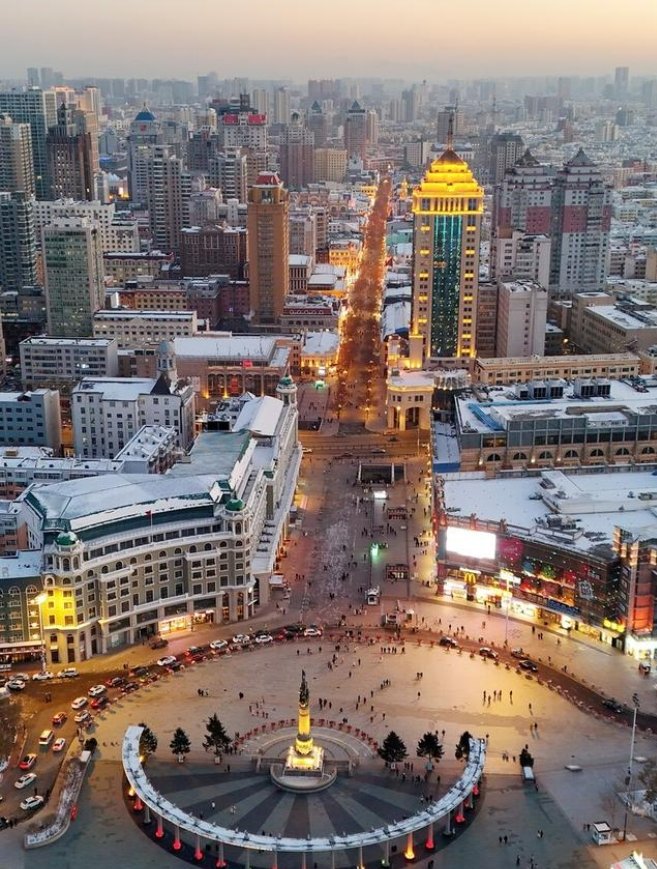
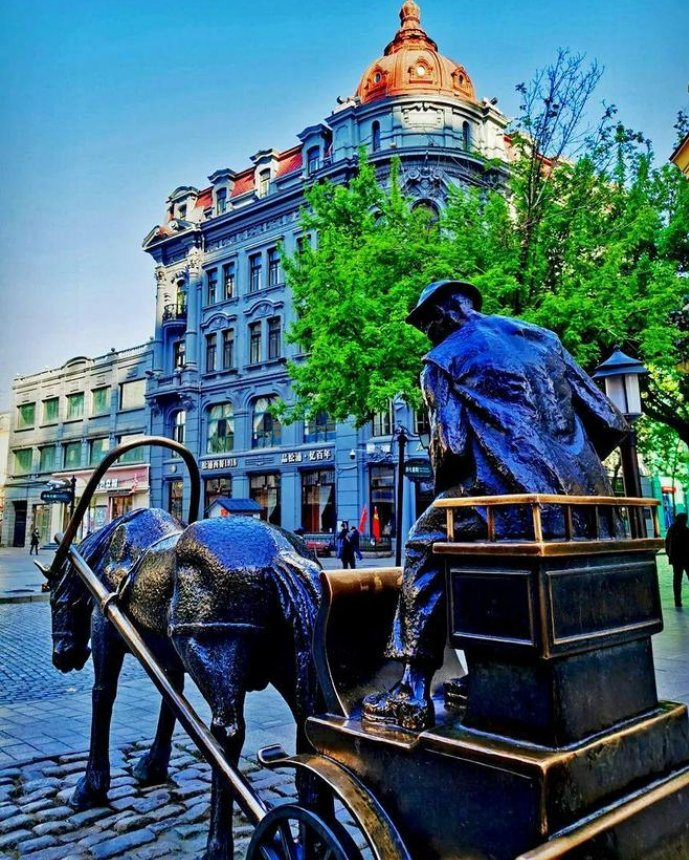
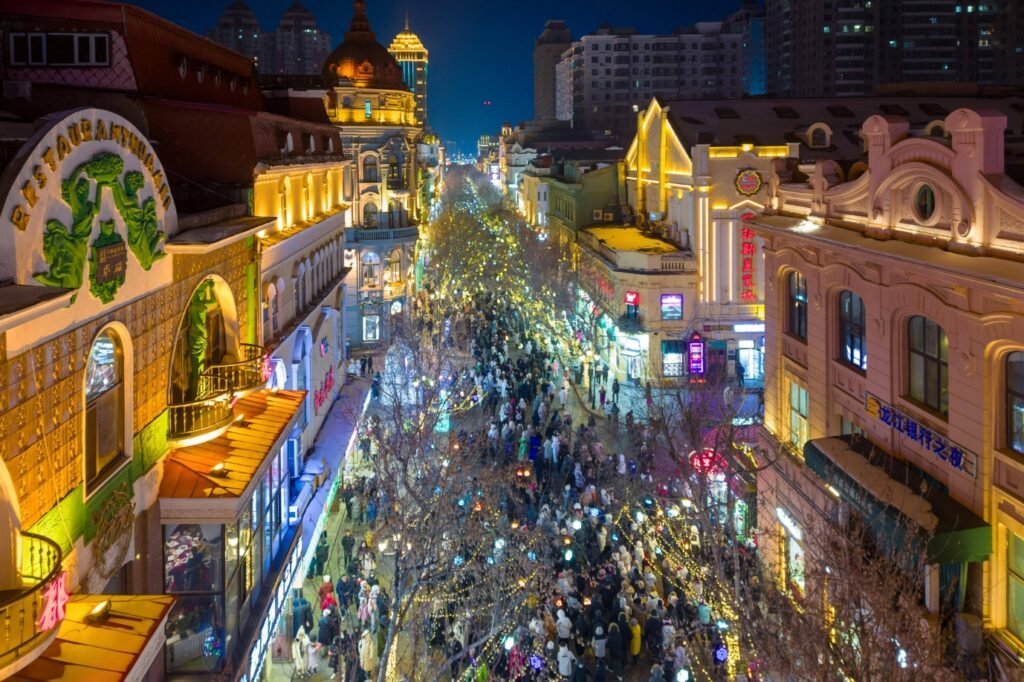
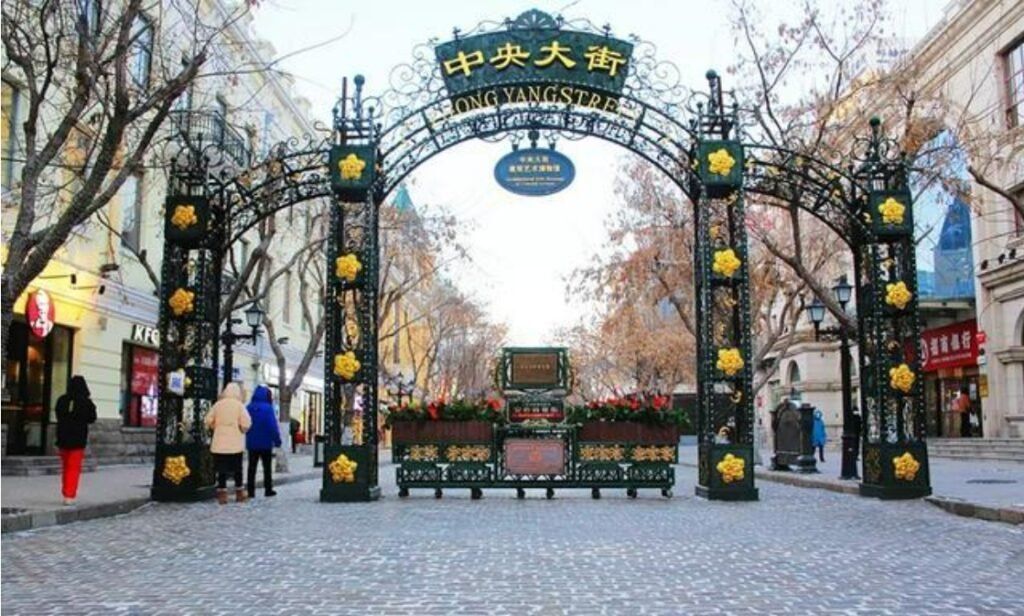
Stalin Park
Originally named Riverside Park, Stalin Park is located on the southern bank of the Songhua River. It is an open, belt-shaped park built along the riverbank, featuring a design inspired by classical Russian architecture. The park is adorned with vibrant “five-color flower beds” and hosts 16 distinctive sculptures scattered throughout its green spaces, including “Swan with Wings Spread,” “Three Boys,” “First Step,” “Diving,” and “Sword Dance.” Each sculpture has its own unique charm.
Across the river lies the famous Sun Island, which can be viewed from the park. At the heart of Stalin Park stands the iconic Flood Control Monument, a symbol of Harbin, built to commemorate the city’s victory over the devastating 1957 flood.
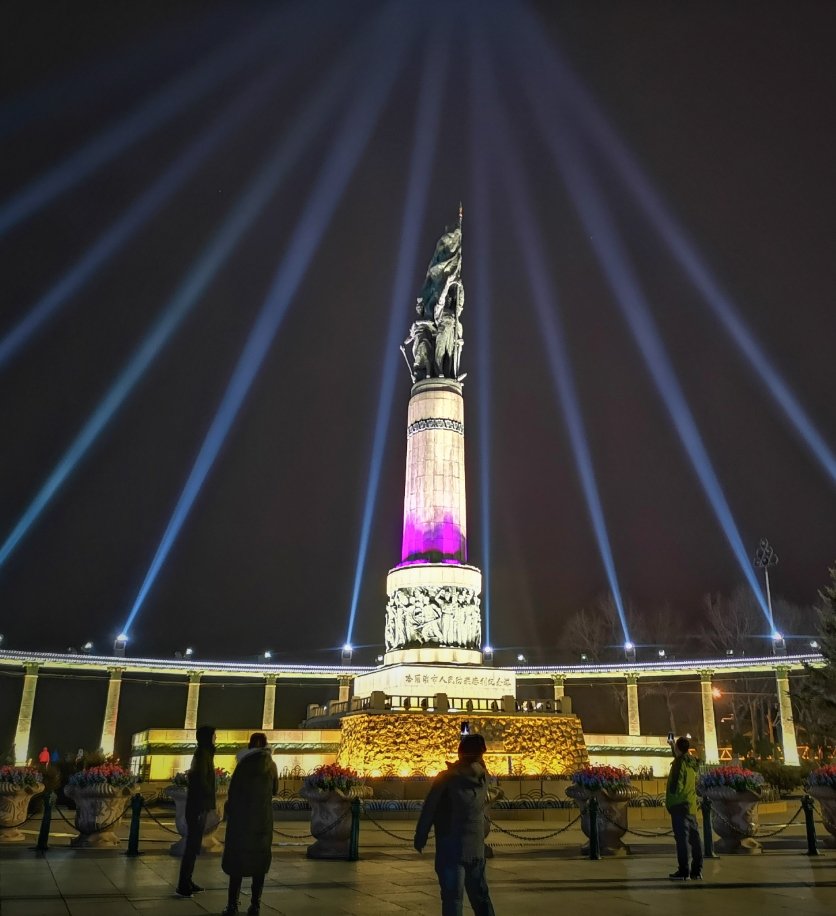
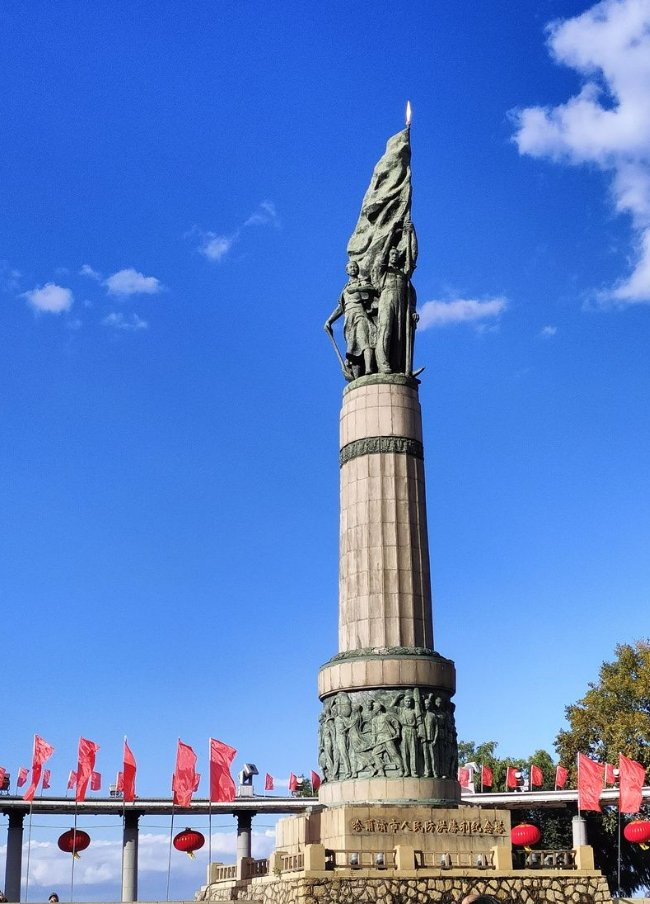
Sun Island Scenic Area
Sun Island Scenic Area is located in the Songbei District of Harbin and is the only urban wetland grassland ecological zone along the river in China. The island covers a total area of 88 square kilometers, with 50 square kilometers designated as a protected area. Known for its countryside charm, European-style architecture, ice and snow artistry, and northern folk culture, Sun Island is a symbol of Harbin.
In the summer, the island is a popular destination for sightseeing and escaping the heat. The scenic area boasts numerous attractions, such as Squirrel Island, Lilac Garden, Flower Garden, and Deer Park, as well as the Water Pavilion Cloud Sky. When winter arrives, it transforms into a wonderland of snow and becomes the largest snow-themed winter park in the country. With stunning snow sculptures and a wide variety of fun winter activities, it’s the perfect place to let loose and enjoy the magic of a snowy paradise!
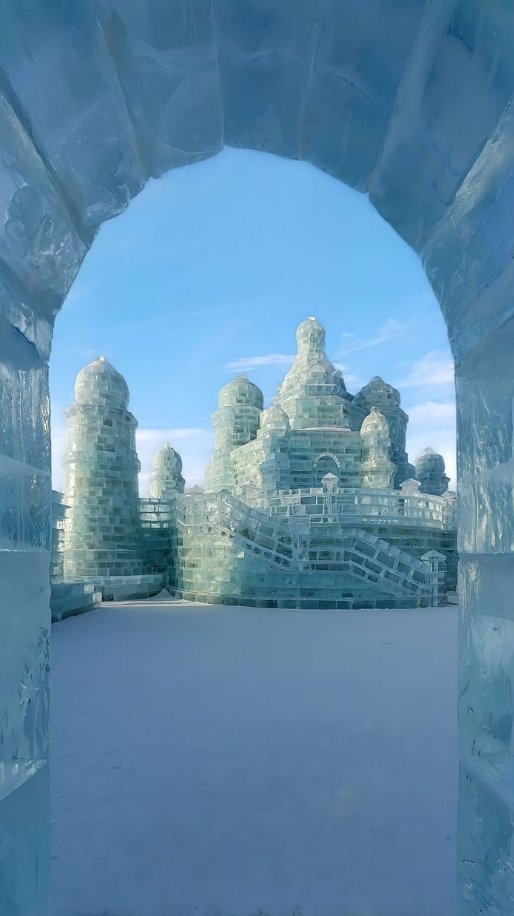
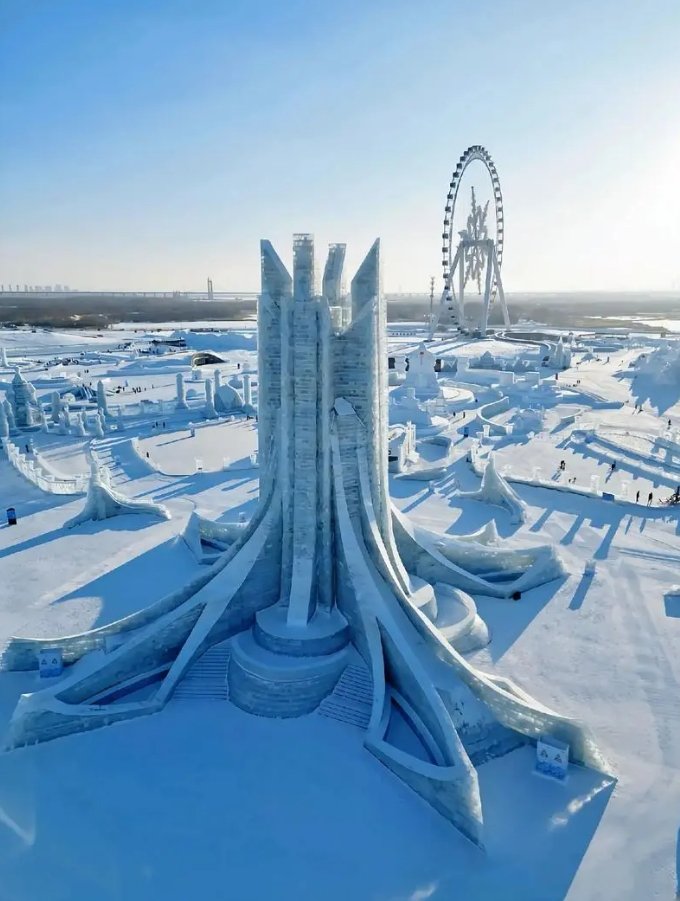
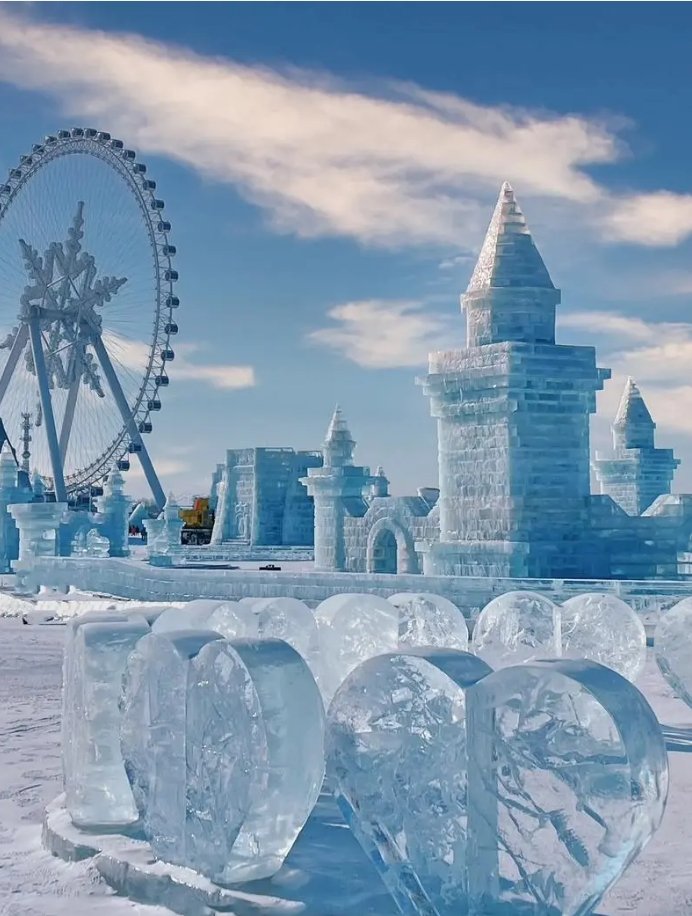
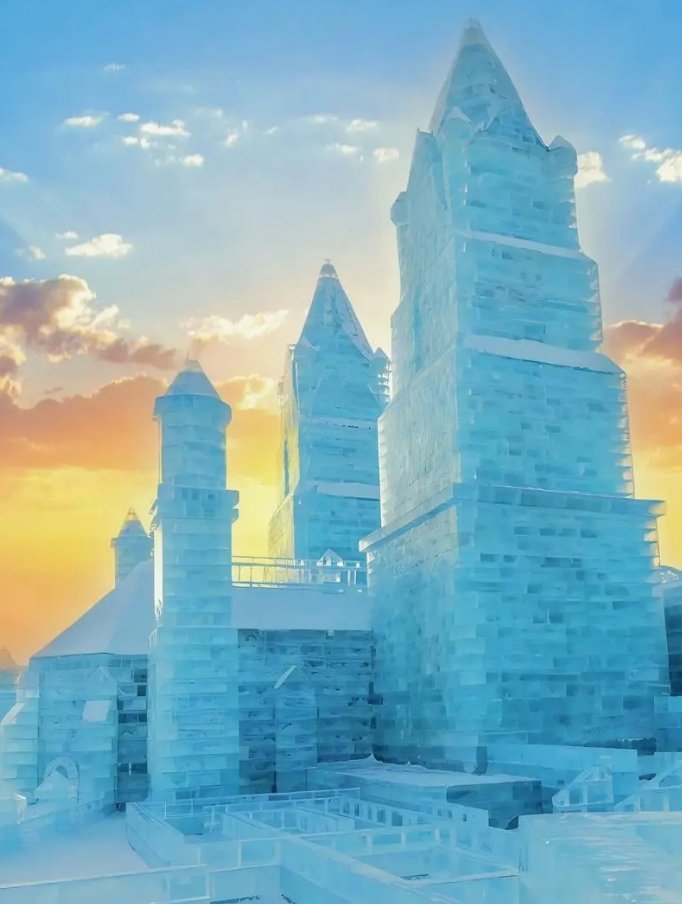
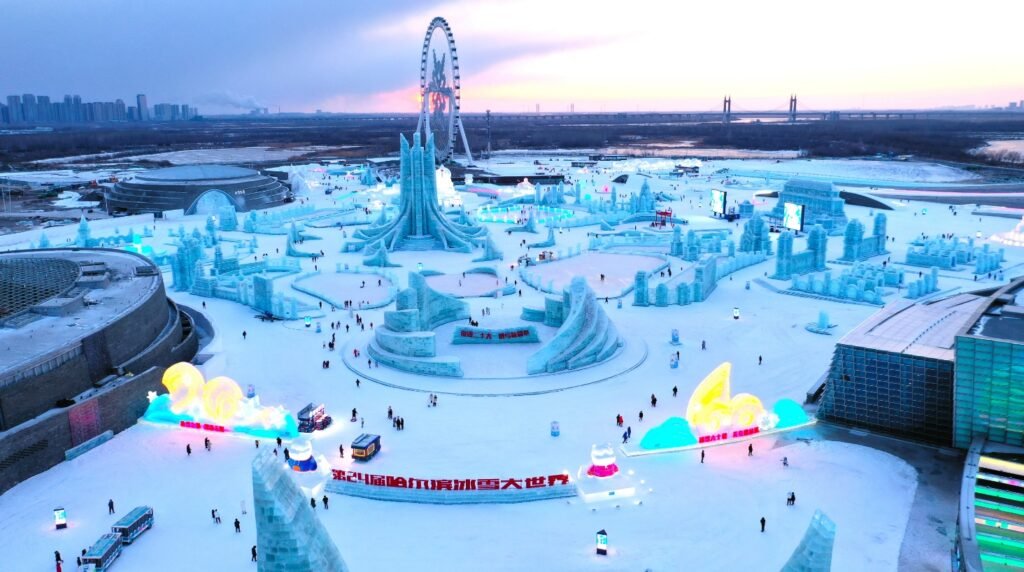
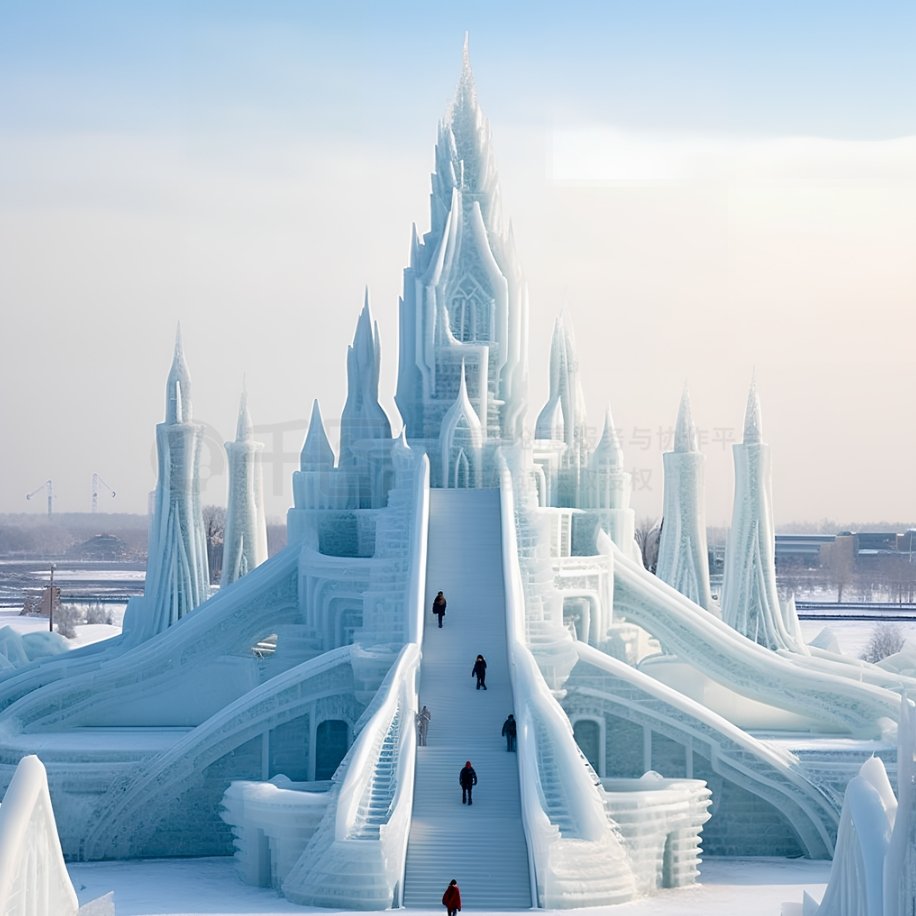
Northeast Tiger Park
The Northeast Tiger Park is a comprehensive tourist destination that integrates conservation, research, and tourism. It is currently the largest artificial breeding base for Siberian tigers in the world. The park features ten key areas for visitors, including the Wild Training Zone, Adult Tiger Zone, Cub Zone, King Tiger Zone, Growth Zone, Breeding Zone, Lion and Tiger Zone, African Lion Zone, Walking Area, and Tiger Viewing Platform.
Visitors can observe over 100 purebred Siberian tigers, along with 8 white tigers, 1 snow tiger, 2 white lions, 2 liger hybrids, 3 black jaguars, and 20 African lions. Except for the walking area and the Tiger Viewing Platform, visitors explore most areas by vehicle to search for tigers and witness the majesty of these incredible creatures up close.
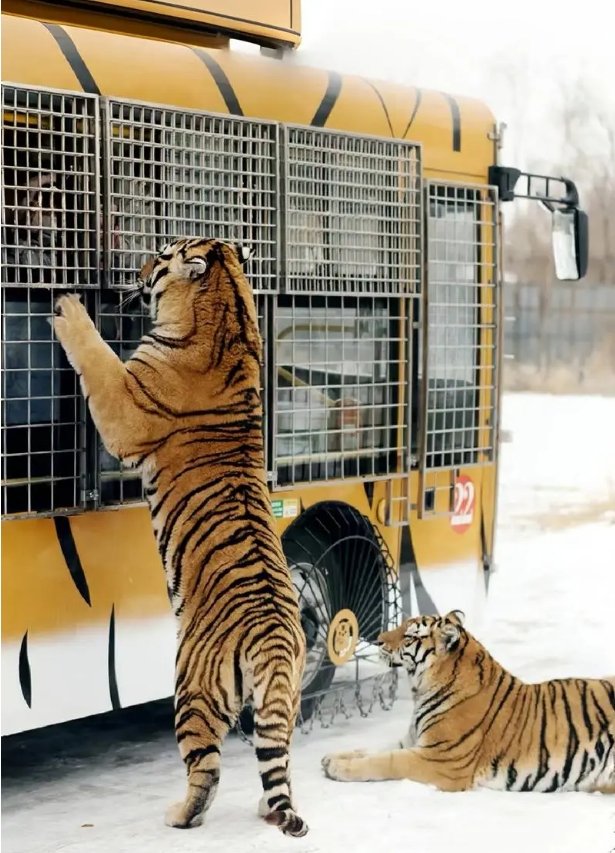
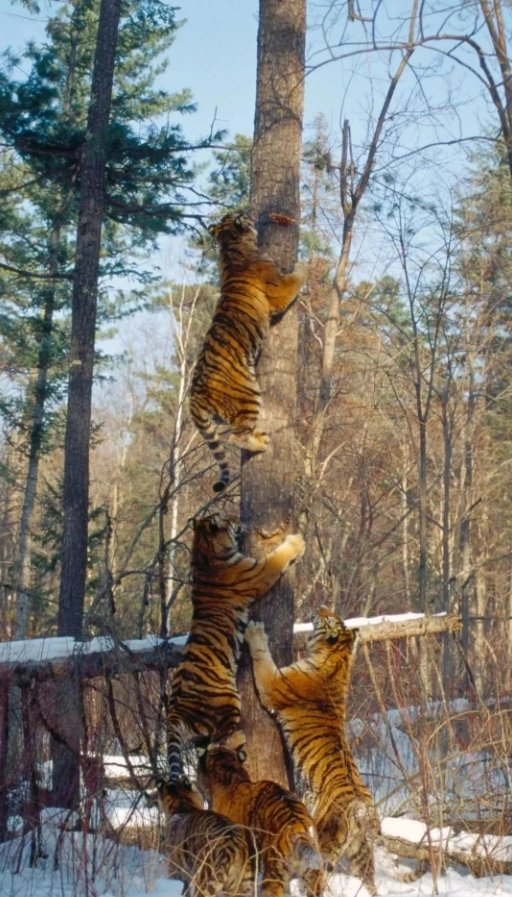
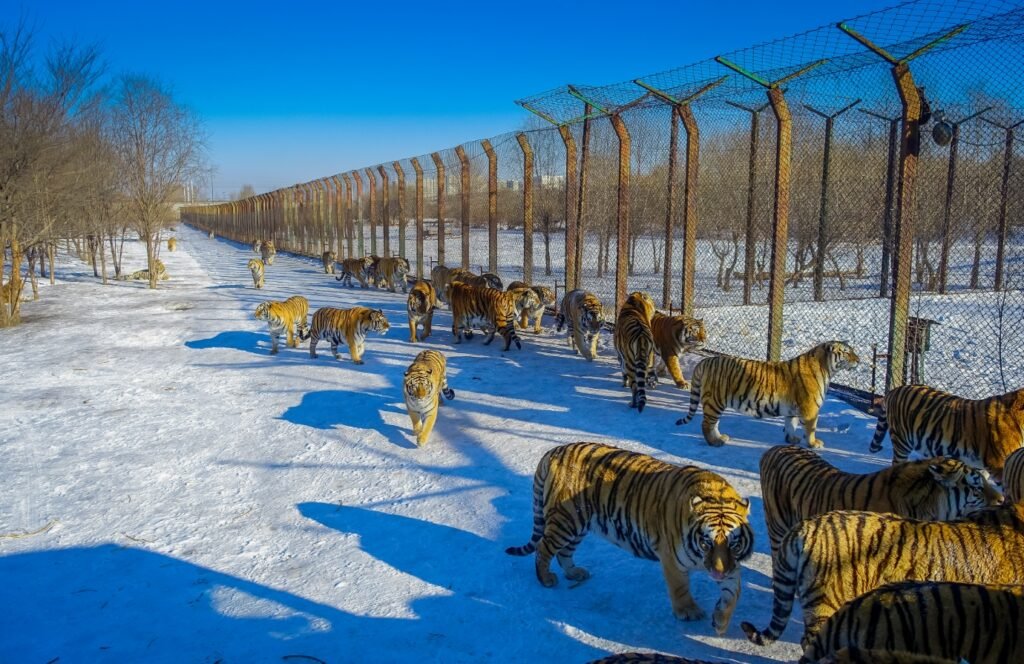
Harbin Polar Museum
At the Polar Museum, famous polar animals from around the world come together to present a unique show. One of the highlights is the only underwater performance featuring beluga whales in the world, where China’s top female trainer performs alongside the beluga whale named Mira in the enchanting show “Heart of the Ocean,” which has touched audiences worldwide.
The museum is also home to the first Antarctic penguin born in an inland city, named Mambo, who has become a joyful ambassador for Harbin’s tourism. Among the more amusing stars are the polar bear brothers, Tangji and He De, the comical duo of Russian walruses, Eno and Eva, and the magical sea lion, Billy, along with his talented sea lion team. Various adorable polar animals take the stage in succession, offering a fantastical polar performance extravaganza that’s sure to delight visitors!
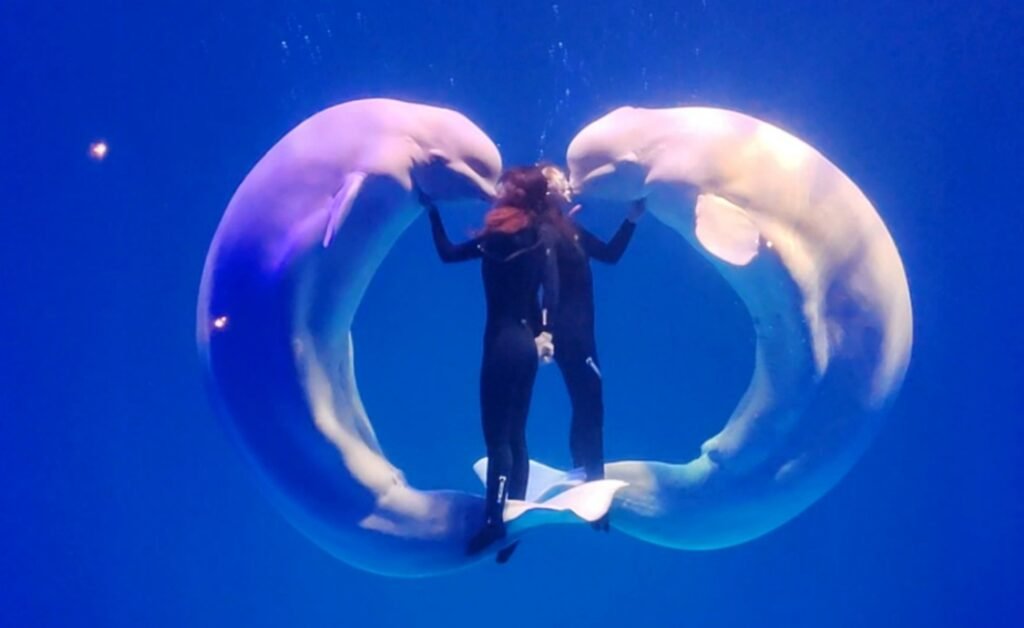
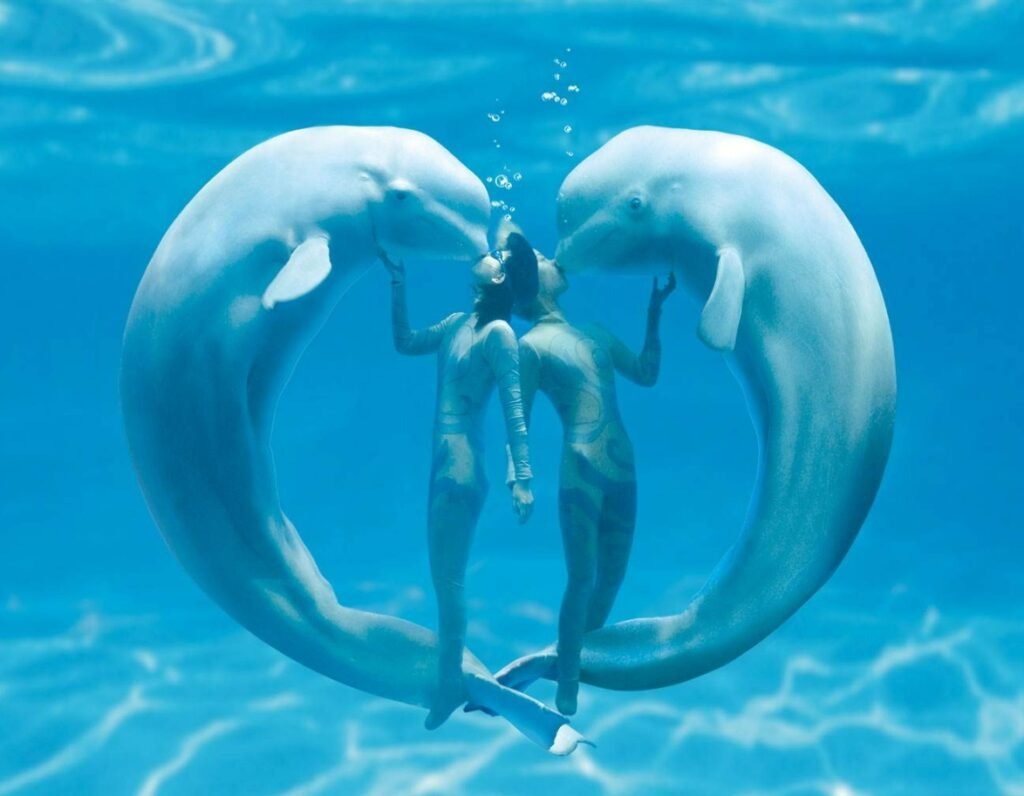
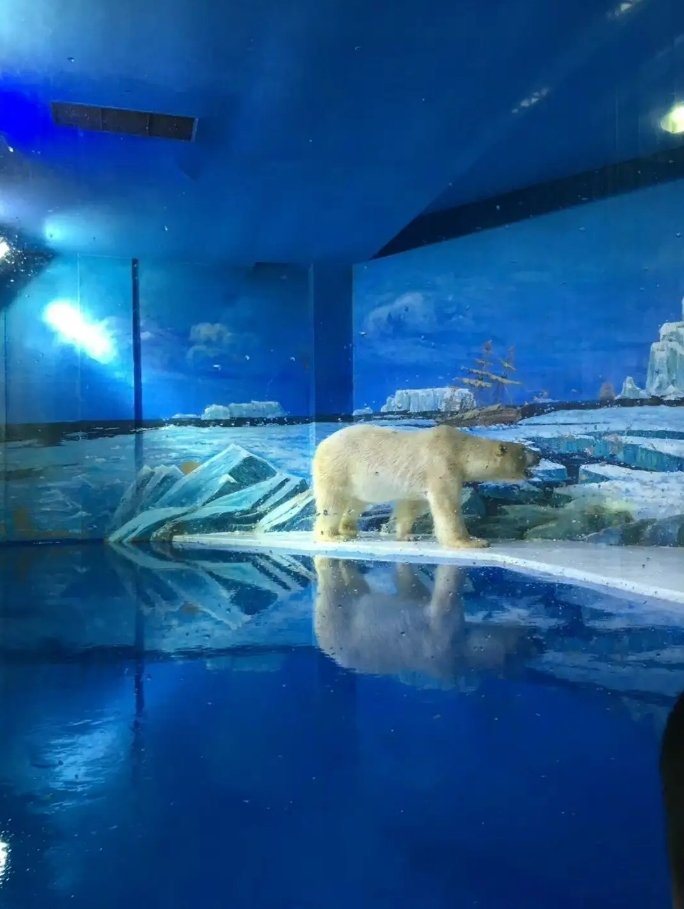
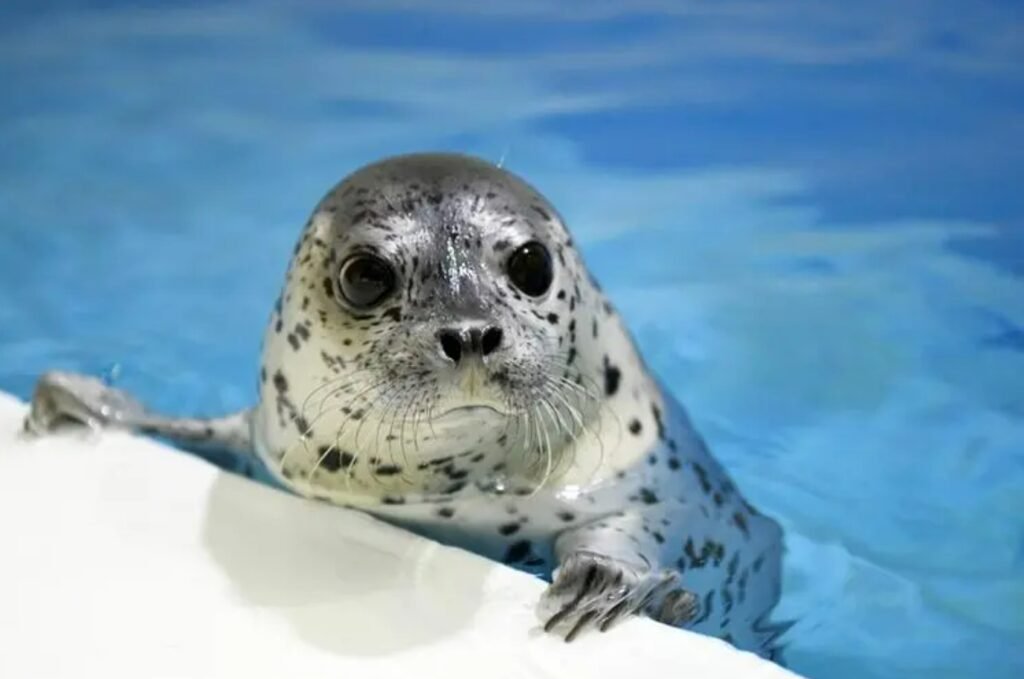
Jile Temple
Jile Temple, built in the 1920s, covers an area of 57,000 square meters and is one of the four renowned Buddhist temples in Northeast China. The seven-story pagoda in the eastern courtyard is directly connected to the Ksitigarbha Hall, and the inner walls of both the hall and the pagoda are adorned with vibrant murals depicting Buddhist stories. These colorful murals have become a major attraction within the temple.
Every year, on the eighth, eighteenth, and twenty-eighth days of the fourth month of the Chinese lunar calendar, Jile Temple holds a grand temple fair to celebrate Buddha’s birthday. The event draws large crowds and is filled with lively activities, making it a bustling and extraordinary occasion.
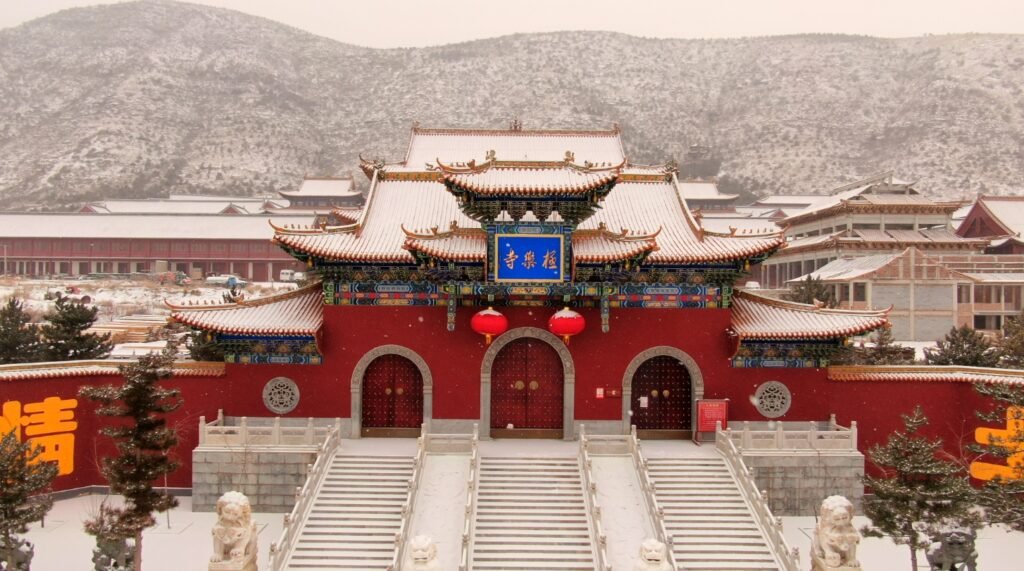
The New Synagogue
Built in 1918, the New Synagogue is the largest synagogue in China. It has been repurposed as part of Harbin’s Architectural Art Museum and is now open to the public. The synagogue currently features two main exhibitions: the “Harbin Jewish History and Culture Exhibition,” which primarily showcases the history of Jewish life in Harbin from the late 19th century to the early 20th century, and the “Gaze at Architectural Art Exhibition,” which highlights the achievements of urban construction and development in Harbin since the economic reforms, through various mediums such as paintings, photographs, and architectural models.
Snow Sculpture Expo
If you want to see stunning snow sculptures, this is the place to be! The various competition and viewing areas will leave you in awe, showcasing incredibly lifelike designs that create a white visual spectacle. The Sun Island Snow Sculpture Expo is currently the largest snow-themed winter amusement park in the country. In addition to admiring the exquisite sculptures, visitors can enjoy interactive games like the Century Grand Slide and the Whimsical Chessboard, making for a truly fun experience!
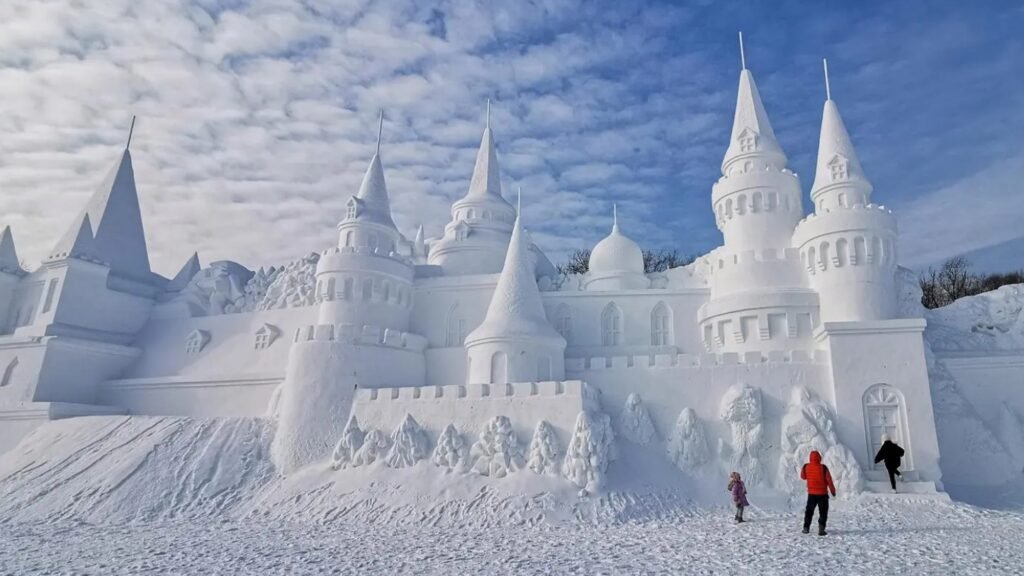
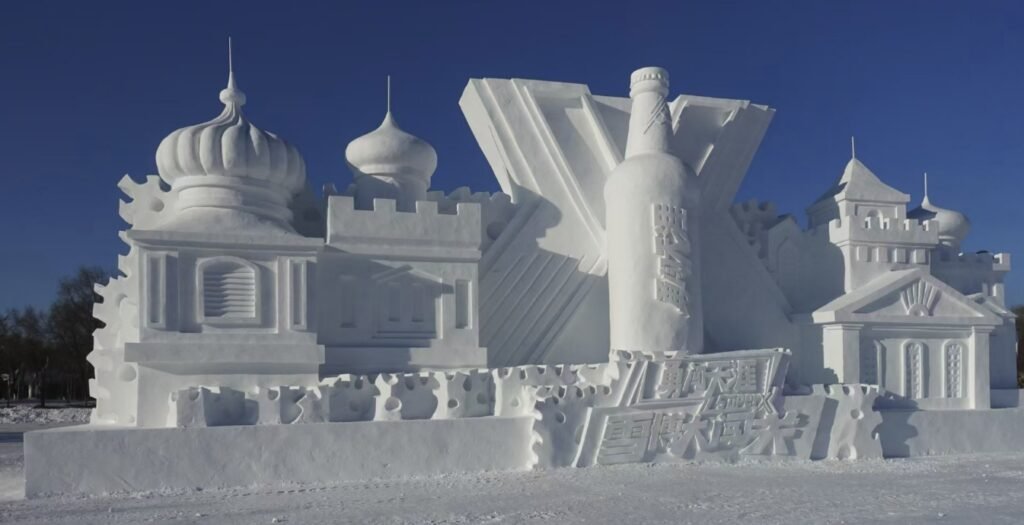
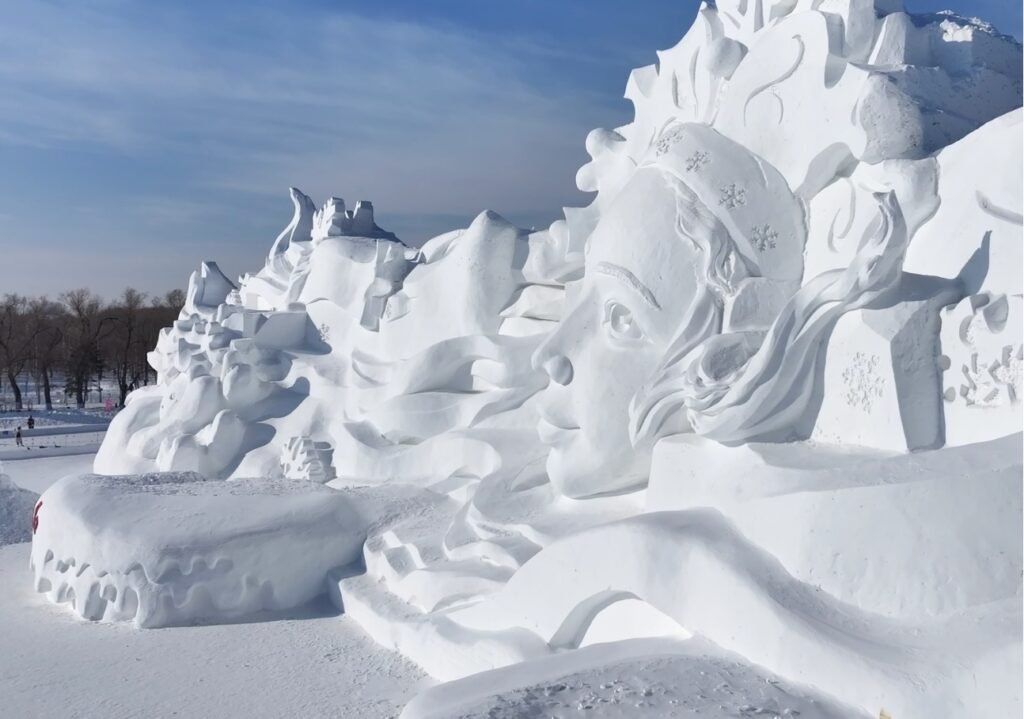
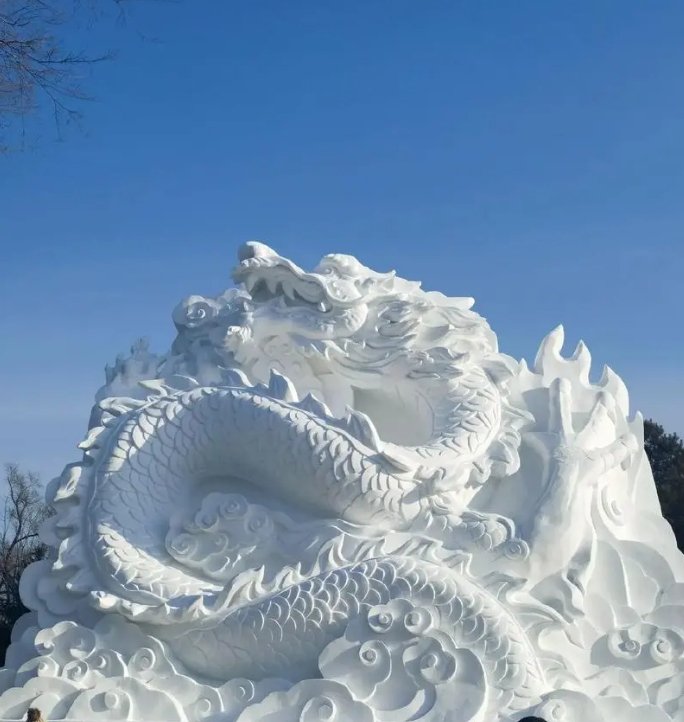
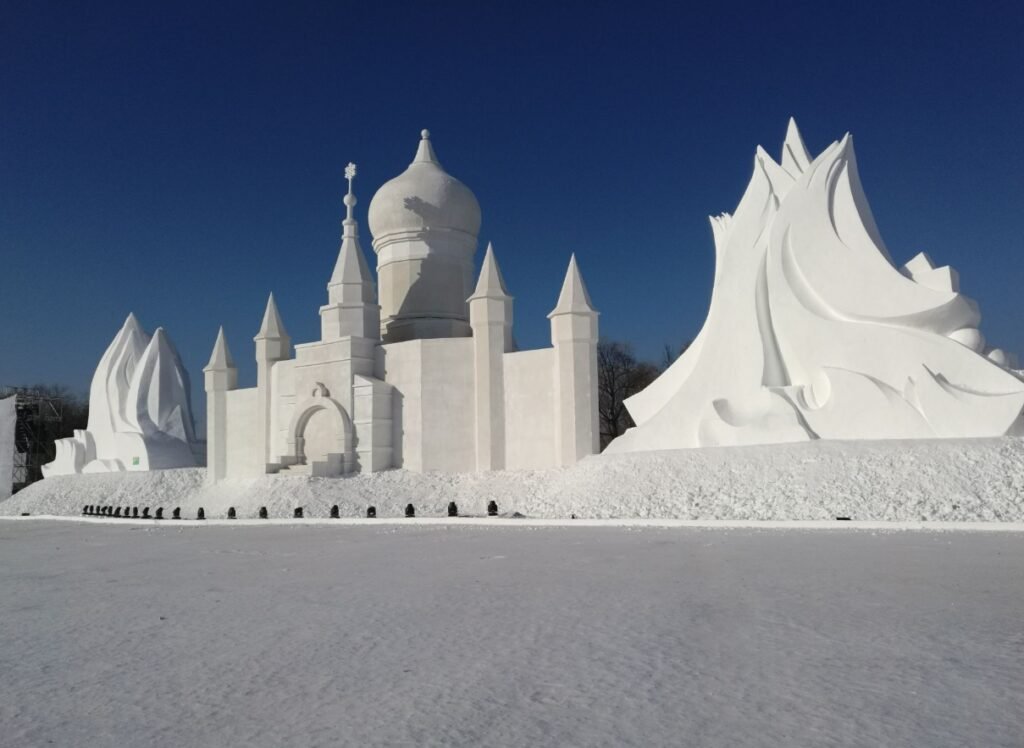
Ice Lantern Festival
The Ice Lantern Festival runs annually from January 5th to the end of February. Under the skillful hands of artists and craftsmen, natural ice transforms into exquisite, lifelike artworks, creating a magical world of ice and a sea of light. Each year, the ice lantern art evolves, leading people to refer to it as a “fairy tale that never repeats itself.” The festival is a stunning celebration of creativity and beauty, attracting visitors from all over.
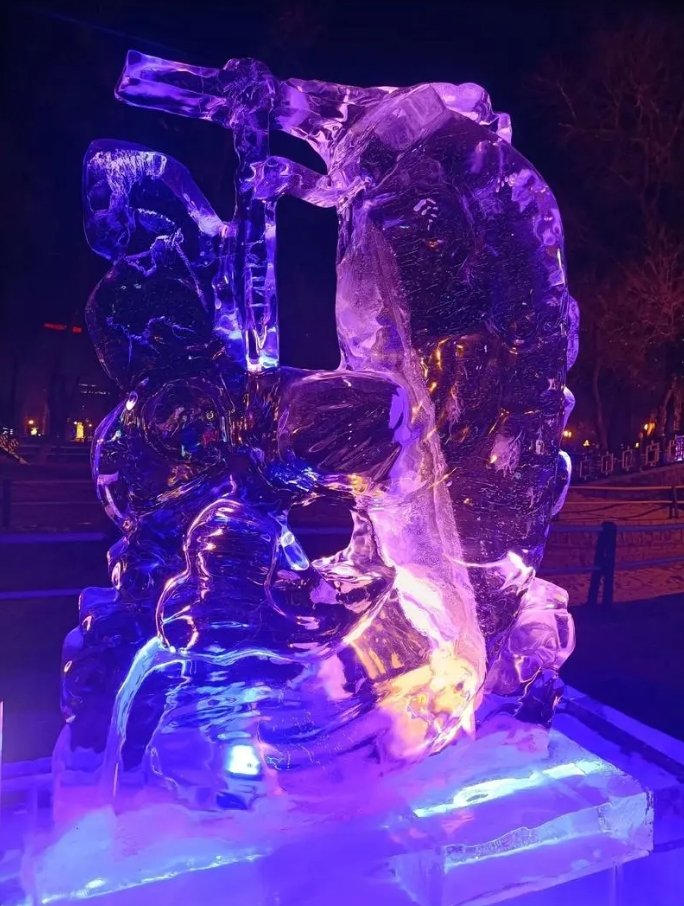
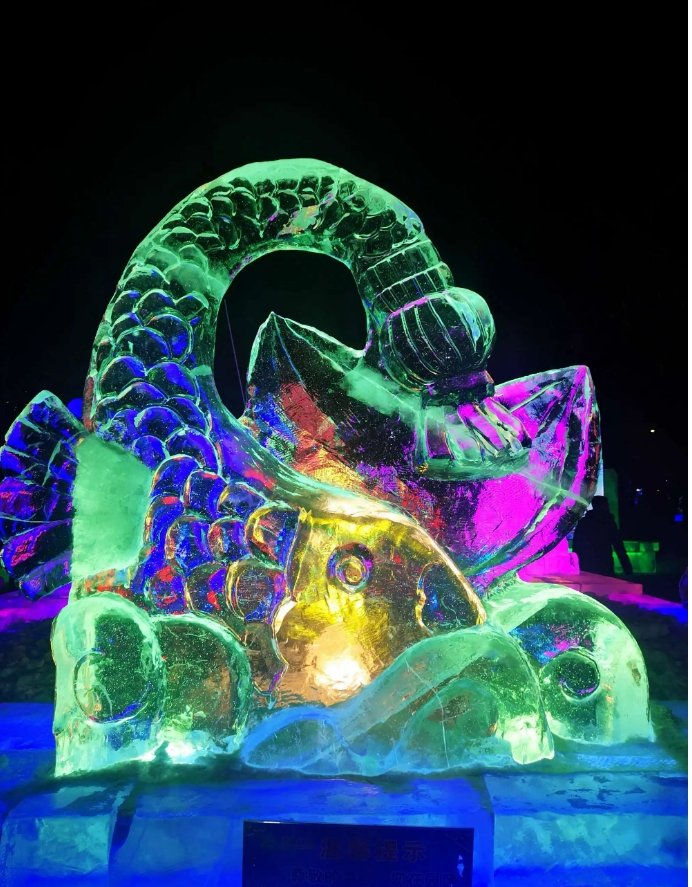
Accommodation Guide:
As the capital of Heilongjiang Province, Harbin offers a wide variety of hotel options to meet the diverse needs of visitors. Since most attractions are concentrated around Central Avenue in Daoli District, it’s recommended to stay near Tongjiang Street, Central Avenue, Zhaolin Street, Shangzhi Street, Dedu Street, or Youyi Road. These areas provide convenient access to major sights, dining, and entertainment, ensuring a comfortable and enjoyable stay in the city.
Food Guide:
Harbin’s cuisine, influenced by Russian and minority ethnic food cultures, has two main highlights:
- Authentic Northeastern Cuisine: You can enjoy truly authentic Northeastern dishes here, which are hearty and flavorful.
- Genuine Russian Fare: Harbin is also famous for its authentic Russian meals, offering a variety of classic dishes that showcase unique flavors.
Whether you’re craving comforting Northeastern fare or delicious Russian delicacies, Harbin has got you covered!
Local Specialties
Northeastern cuisine mainly consists of hearty stews, characterized by large portions and strong flavors, which may come off as a bit salty for visitors from the south. The dishes can appear rustic, often served as big chunks of ingredients thrown together, but they’re packed with flavor and boast vibrant colors. If you visit Harbin, especially in the winter, you absolutely have to try authentic Northeastern dishes. Favorites like “Di San Xian” (stir-fried potatoes, eggplants, and bell peppers), chicken stewed with mushrooms, pork with vermicelli, boiled pork slices, and “Démǒlì” stewed live fish are all must-tries. Keep in mind that portions at Harbin restaurants are usually quite generous, so be sure to order wisely to avoid waste.
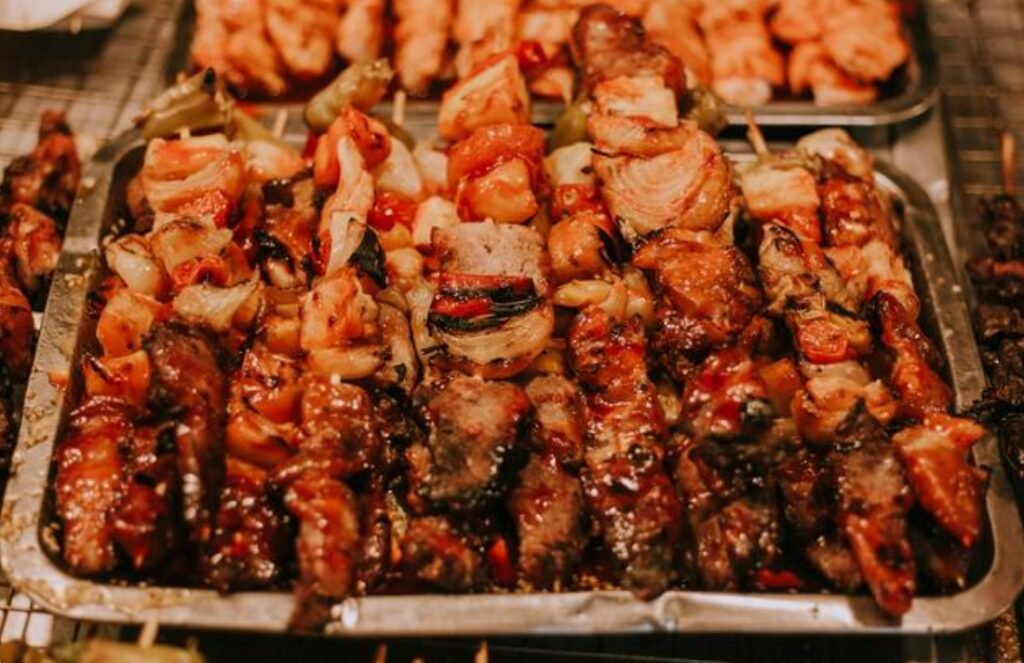
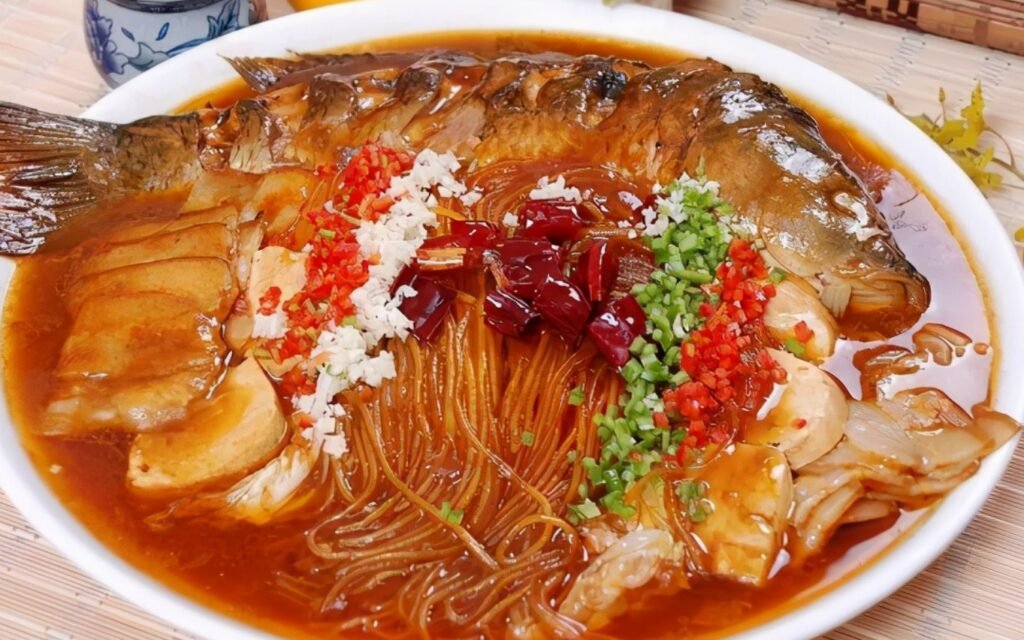
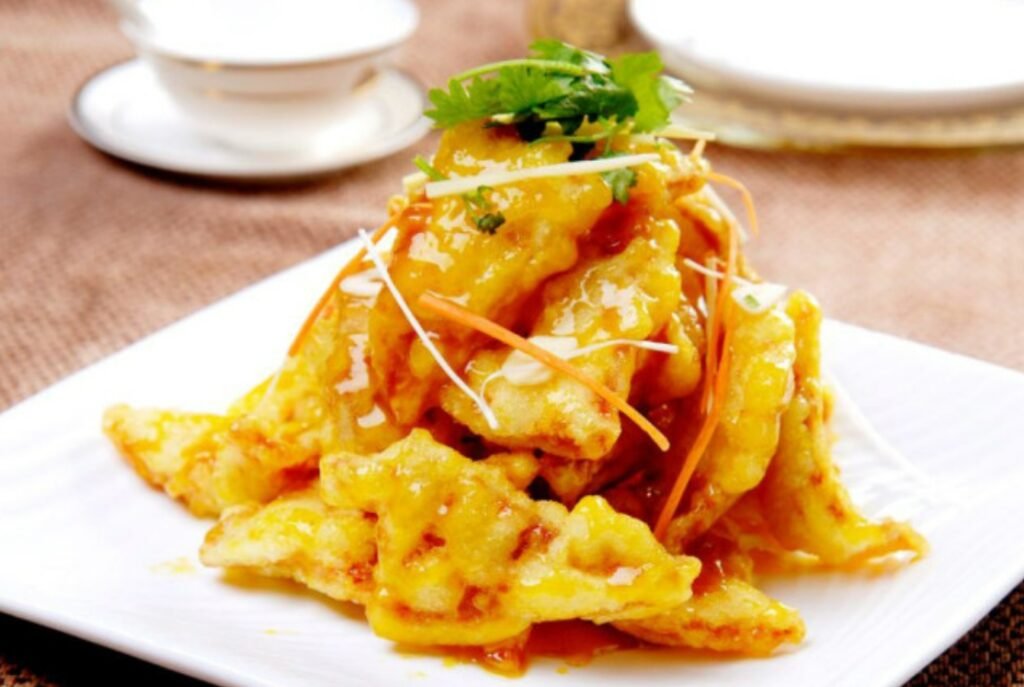
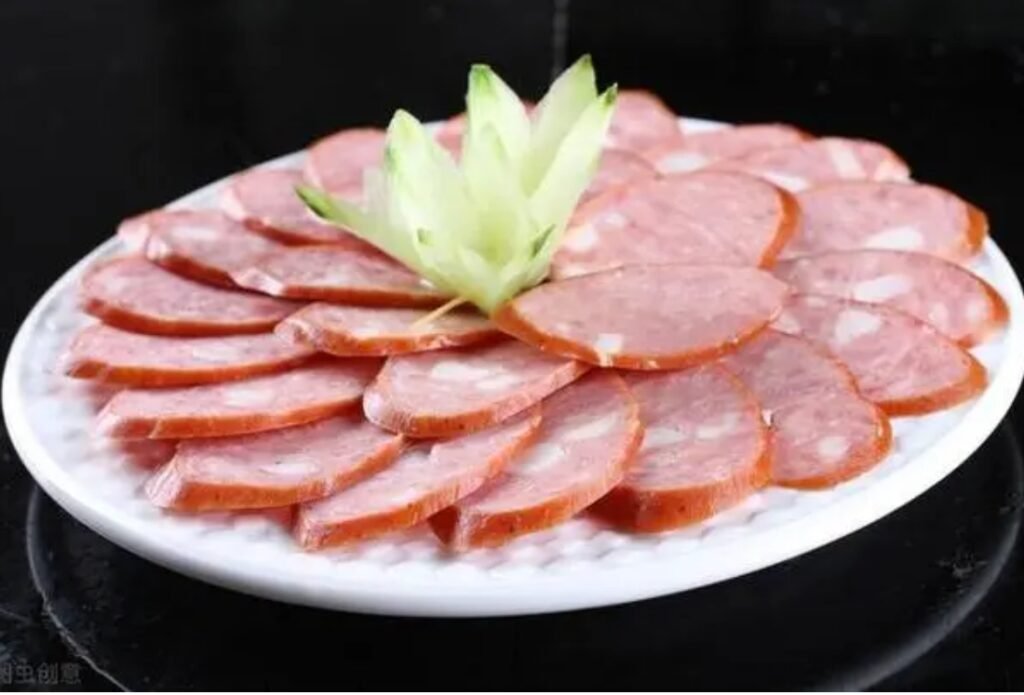
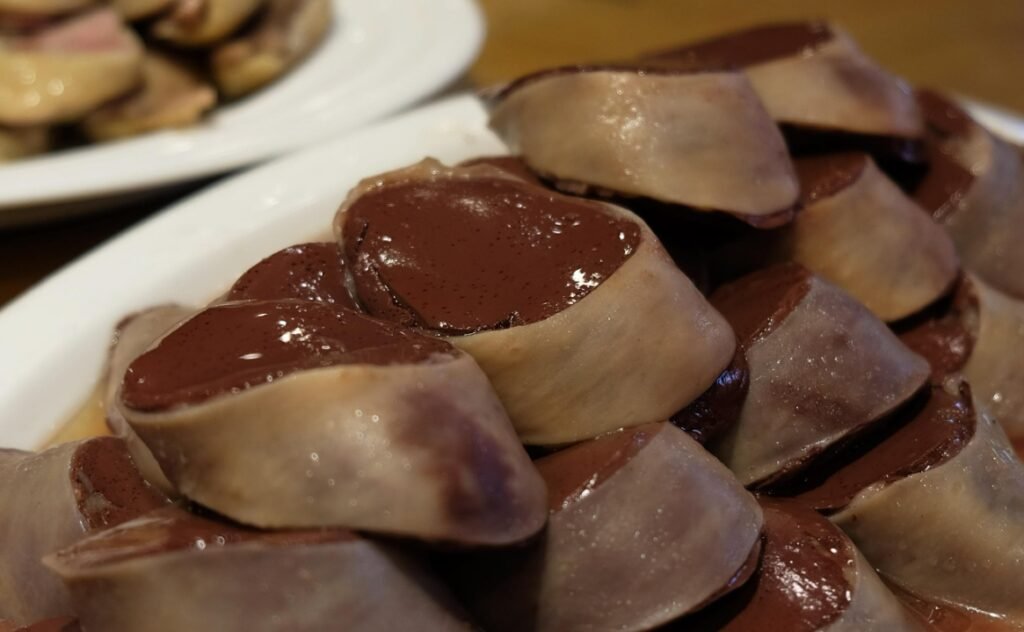
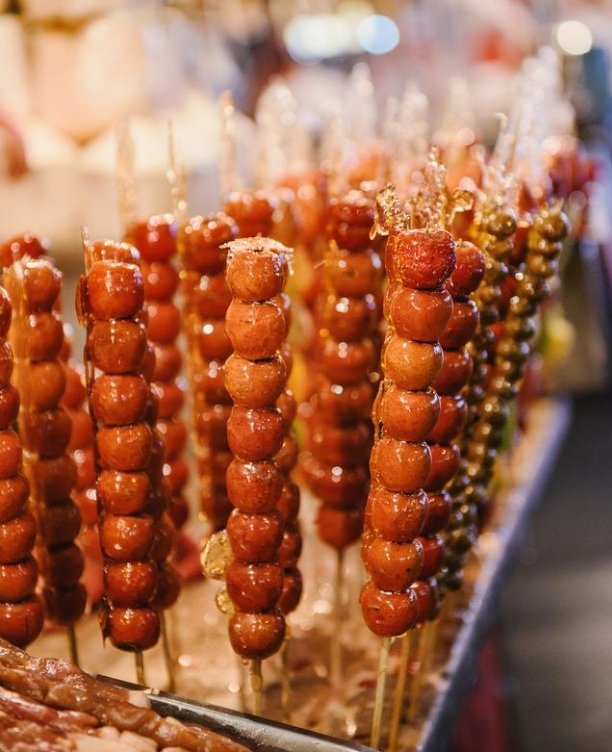
Two-Day Summer Trip in Harbin
Itinerary Design:
Day 1: St. Sophia Cathedral → Central Avenue → Stalin Park
Day 2: Sun Island → Polar Museum → Northeast Tiger Park
Itinerary Details:
Day 1: Start your day at Sophia Square. After visiting St. Sophia Cathedral, stroll over to Central Avenue, where you can enjoy the historic atmosphere and admire the European-style buildings lining the street. For lunch, choose a nearby restaurant to indulge in authentic Russian cuisine. In the afternoon, take a leisurely walk to Stalin Park for a visit. In the evening, you can choose a local entertainment option to experience the unique culture of the area.
Day 2: The second day’s activities will mainly take place on the northern bank of the Songhua River. You can catch a bus from the Road Bridge or Youyi Road to Sun Island, where you can also visit the Polar Museum. In the afternoon, head over to Northeast Tiger Park for a close encounter with Siberian tigers.

